
国际贸易实务(英语版)(第2版)
全新正版现货
¥ 44.9 7.6折 ¥ 59 全新
仅1件
四川成都
认证卖家担保交易快速发货售后保障
作者卢立伟、王芬、杨婷、蔡静、陈逢丹
出版社清华大学出版社
ISBN9787302504771
出版时间2018-08
装帧平装
开本16开
纸张胶版纸
定价59元
货号26317155
上书时间2023-10-13
- 在售商品 暂无
- 平均发货时间 21小时
- 好评率 暂无
- 最新上架
商品详情
- 品相描述:全新
- 正版全新
- 商品描述
-
【编辑】:
《国际贸易实务(英语版)(第2版)》提供开篇案例或新闻导读。并在各章节适当位置配上相关的案例、流程图、合同条款以及法律条文和惯例,同时,在每章节的末尾配上相应的练习,以增强本书的实践性和可操作性。
【内容简介】:
《国际贸易实务(英语版)(第2版)》以国际贸易流程为基础框架,介绍了国际贸易术语、商品描述、货物运输、货物运输保险、商品价格、支付工具、支付方式、索赔与不可抗力、谈判与磋商、进出口合同的履行以及国际贸易方式等国际贸易实务中的主要内容,配以相关的案例、流程图、合同条款、法律条文和惯例,结构完整,内容全面,具有较强的实践性和可操作性。 《国际贸易实务(英语版)(第2版)》既适合高等院校商务英语、国际贸易等涉外专业的本、专科教学,也可供从事外经贸工作的人士及对外贸感兴趣的读者参考学习。
【作者简介】:
卢立伟,经济学副教授。1998年毕业于江苏理工大学外贸英语本科专业,获文学学士学位;2007毕业于上海对外贸易学院国际贸易专业,获经济学硕士。曾参编出版教材2部,发表论文20余篇,承担或参与省市课题20余项。
【目录】:
目 录
Chapter 1 General Introduction to
International Trade 1
1.1 What Is International Trade 3
1.2 The Importance of International Trade 3
1.2.1 International Trade Restrictions 4
1.2.2 Differences between International
Trade and Domestic Trade 4
1.3 World Trade Organization 5
1.3.1 Overview 5
1.3.2 Functions of WTO 6
1.3.3 Basic Principles 6
1.3.4 Missions 6
1.3.5 Formal Structure 7
1.4 Main Procedures of International Trade 9
1.4.1 Basic Procedures of Export 9
1.4.2 Basic Procedures of Import 12
1.5 Relevant International Practice and
? Laws 13
1.6 Overview of Contract 15
1.6.1 The Functions of a Written
Contract 15
1.6.2 The Essential Features of a Legally
Binding Contract 16
1.6.3 The General Contents of a Sales
Contract 16
1.7 Overview of This Book 18
【Key Terms and Words】: 20
【Exercises】: 20
Chapter 2 International Trade Terms 22
2.1 Introduction to trade terms 24
2.1.1 Warsaw-Oxford Rules 1932 24
2.1.2 Revised American Foreign Trade
Definitions 1941 26
2.1.3 International Commercial
Terms 29
2.2 Introduction to INCOTERMS 2010 29
2.2.1 Mode of transport 30
2.2.2 The six most popular trade
terms 31
2.2.3 The other five trade terms 45
2.3 INCOTERMS 2010 vs. INCOTERMS
? 2000 53
2.4 Incoterms and Contract 57
2.5 Choice of Trade Terms 58
【Key Terms and Words】: 60
【Exercises】: 61
Chapter 3 Terms of Commodity 65
3.1 Name of Commodity 67
3.1.1 Commodity Naming Methods 67
3.1.2 HS Code 68
3.1.3 Name Clauses in the Contract 68
3.2 Quality of Commodity 69
3.2.1 Quality Stipulation Methods 70
3.2.2 Quality Latitude and Quality
Tolerance 76
3.2.3 Quality Clauses in the Contract 77
3.3 Quantity of Commodity 77
3.3.1 Unit of Measurement 78
3.3.2 Calculation of Weight 80
3.3.3 Quantity Allowance Clauses 82
3.3.4 Quantity Clauses in the
Contract 83
3.4 Packing of Commodity 84
3.4.1 Transport Packing 85
3.4.2 Sales Packing 91
3.4.3 Neutral Packing and Designated
Brand 93
3.4.4 Packing Clauses in the Contract 94
【Key Terms and Words】: 96
【Exercises】: 97
Chapter 4 International Cargo
Transport 101
4.1 Containerization 103
4.1.1 Features of Container
Transportation 103
4.1.2 Types of Container 104
4.1.3 Freight of Container
Transportation 105
4.2 Modes of Transportation 107
4.2.1 Marine Transport 108
4.2.2 Air Transportation 121
4.2.3 Railway Transportation 122
4.2.4 International Multi-modal
Transport 122
4.2.5 Land Bridge Transport 123
4.2.6 Postal Transport 123
4.2.7 Pipelines Transport 123
4.3 Shipment Clauses in Sales Contract 124
4.3.1 Time of Shipment and Time of
Delivery 124
4.3.2 Port of Shipment and Port of
Destination 125
4.3.3 Shipping Advice 126
4.3.4 Partial Shipment and
Transshipment 126
4.3.5 Lay Time, Demurrage and
Dispatch 127
【Key Terms and Words】: 129
【Exercises】: 129
Chapter 5 International Cargo Transport
Insurance 133
5.1 Principles of Cargo Insurance 136
5.1.1 Principle of Insurable Interest 136
5.1.2 Principle of Utmost Good
Faith 136
5.1.3 Principle of Indemnity 137
5.1.4 Principle of Proximate Cause 138
5.2 The Definition of Insurance 138
5.3 Parties to the Insurance 139
5.3.1 Insurer 139
5.3.2 Insured 140
5.3.3 Brokers 140
5.4 Marine Insurance 140
5.4.1 Risks 141
5.4.2 Losses 141
5.4.3 Expenses 143
5.5 Coverage of Marine Cargo Insurance
? of CIC 144
5.5.1 Basic Coverage 145
5.5.2 Additional Risks 146
5.6 Coverage of Marine Cargo Insurance
? of ICC 150
5.6.1 Institute Cargo Clauses A 150
5.6.2 Institute Cargo Clauses B 151
5.6.3 Institute Cargo Clauses C 151
5.6.4 Major Exclusion 153
5.7 Procedures of Marine Insurance 153
5.7.1 Gather Information 153
5.7.2 Choose the Insurance
Coverage 154
5.7.3 Get Quotes 154
5.7.4 Pay the Insurance Premium 154
5.7.5 Purchase the Insurance Policy 155
5.7.6 Lodge an Insurance Claim 156
5.8 Insurance Clauses in Sales Contract 157
【Key Terms and Words】: 159
【Exercises】: 160
Chapter 6 Price of Goods 163
6.1 Price Elements 165
6.1.1 Pricing Principles 165
6.1.2 Pricing Consideration 166
6.1.3 Pricing Methods 167
6.1.4 Pricing Composition 170
6.1.5 Currency Option 172
6.2 Calculation of Price 173
6.3 Export Cost Accounting 175
6.4 Commission and Discount 177
6.4.1 Price Including Commission 177
6.4.2 Price with Discount 178
6.5 Import Cost Accounting 178
6.5.1 Import contract price 179
6.5.2 Total Domestic Expenses of
Importing Countries 179
6.5.3 Calculation of Imported Goods
Tariff 179
6.5.4 Calculation of Value-added Tax and
Consumption Tax 180
6.5.5 Total Import Cost 181
6.6 Price Clause in Sales Contract 181
【Key Terms and Words】: 182
【Exercises】: 182
Chapter 7 Credit Instruments 184
7.1 Summary of Instruments 186
7.1.1 Definition of Instruments 186
7.1.2 Essential Features of
Negotiable Instruments 186
7.1.3 Functions of Negotiable
Instruments 187
7.1.4 The Legal System of
Instruments 188
7.2 Bill of Exchange (Draft, Bill) 190
7.2.1 Definition of Bill of
Exchange 190
7.2.2 Contents of a Bill of
Exchange 191
7.2.3 The Acts of Bills of
Exchange 195
7.2.4 The Classification of the
Drawer 199
7.2.5 The Order of Making
Recourse 200
7.3 Promissory Note 201
7.3.1 The Definition from Bills of
Exchange Act 1882 of the United
Kingdom 201
7.3.2 The Definition from the Negotiable
Instruments Law of the People’s
Republic of China 201
7.3.3 The Key Elements in the
Promissory Note 202
7.3.4 Classification of Promissory
Notes 202
7.3.5 Differences Between a Promissory
Note and a Bill of Exchange 203
7.4 Check (Cheque) 204
7.4.1 Definition of Check 204
7.4.2 Classification of Check 205
7.4.3 Differences Between a Check and
a Bill of Exchange 205
【Key Terms and Words】: 206
【Exercises】: 206
Chapter 8 International Payment and
Settlement 210
8.1 Remittance 212
8.1.1 The Definition of Remittance 212
8.1.2 Parties to an Remittance 212
8.1.3 The Classification of Remittance 213
8.1.4 Reimbursement of Remittance
Cover 216
8.1.5 Cancel the Remittance or Refund
the Imbursement 217
8.1.6 The Application of Remittance
in International trade 218
8.2 Collection 220
8.2.1 Definition of Collection 221
8.2.2 Nature of Collection 221
8.2.3 Procedure of Documentary
Collection 221
8.2.4 The Involved Parties in
Collection 222
8.2.5 Types of Collection 222
8.2.6 The Property, Advantages
and Disadvantages 225
8.2.7 The Rules of Uniform Rules
for Collections 522 (URC522) 225
8.2.8 Points for Attention for
Collection 226
8.2.9 Risk and Protection for Exporters
and Importers 226
8.2.10 Financing under the
Collection 227
8.3 Letter of Credit 229
8.3.1 Definition of L/C 229
8.3.2 Parties to a Letter of Credit 230
8.3.3 Procedure of Credit L/C 232
8.3.4 Characteristics of a Letter of
Credit 240
8.3.5 The Use of a Letter of Credit 241
8.3.6 Contents of a Letter of Credit 241
8.3.7 The Varieties of Documentary
Credit 242
8.3.8 Other Special Credits 246
8.3.9 Combined Use of Different
Methods of Payment 250
【Key Terms and Words】: 252
【Exercises】: 253
Chapter 9 Inspection, Claims, Force
Majeure and Arbitration 264
9.1 Inspection 266
9.1.1 The Implication of
Commodity Inspection 267
9.1.2 The Importance of
Commodity Inspection 267
9.1.3 Import and Export
Commodity Inspection 268
9.1.4 Time and Place of Inspection 268
9.1.5 Inspection Standard 270
9.1.6 Inspection Certificate 271
9.1.7 Inspection Clause 272
9.1.8 Inspection Procedures 272
9.2 Claim 273
9.2.1 Breach of Contract 275
9.2.2 Liabilities of Breach of
Contract 275
9.2.3 Valid Term for Claim 276
9.3 Force Majeure 277
9.3.1 Definition of Force Majeure 277
9.3.2 Features of Force Majeure 277
9.3.3 Consequences of Force
Majeure 278
9.3.4 Force Majeure Clause 278
9.4 Arbitration 280
9.4.1 The Definition of Arbitration 280
9.4.2 Characteristics of Arbitrat
— 没有更多了 —










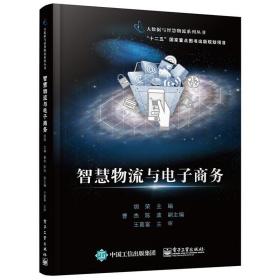
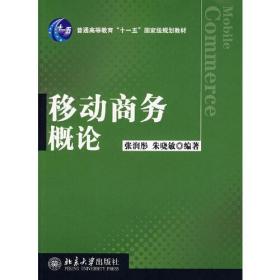
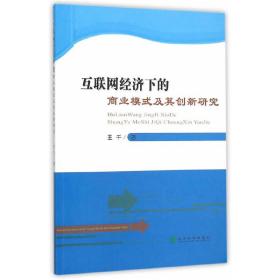

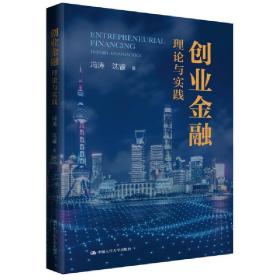

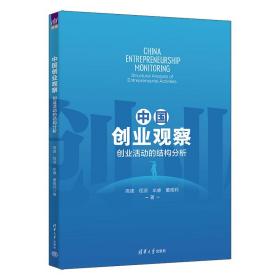


以下为对购买帮助不大的评价